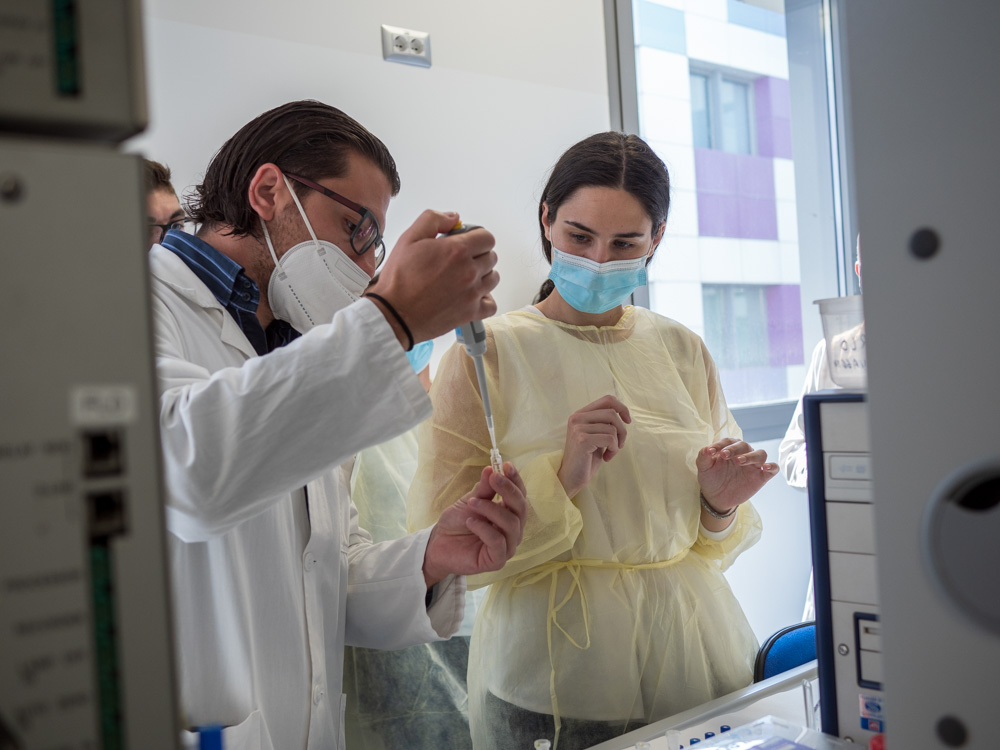BESTMEDGRAPE, when the research meets the entrepreneurs: from the master’s degree thesis to the experience of the Living Labs

Three students from the Faculty of Pharmacy of the University of Cagliari worked under the supervision of Prof. Carlo Tuberoso, in research projects developed in the framework of BESTMEDGRAPE project.
Davide Cuneo developed the project “Extraction of phenolic compounds from grape Cannonau pomace” aimed at improving the HPLC-DAD method for the quali-quantitative analysis of the polyphenolic compounds from grape pomace.
Mara Salis’ project “Variation of phenolic compounds extracted from white and red grapes pomace” aimed at the comparison of polyphenolic compounds extracted from red Syrah and white Chardonnay grape pomace.
Benedetta Conte project “Pomace from native grapes as a source of antioxidant compounds” was focused on the antioxidant properties of pomace extracts grape from France, Tunisia and Italy.
The three of them defended with success their master’s thesis on 22/07/2021.
We took the opportunity to ask professor Tuberoso to describe us his work. “As professor of Food Chemistry at the Department of Environmental and Life Sciences of the University of Cagliari, I conduct research and teach classes related to my field of expertise, mainly focused on nutraceutical aspects of foods. In the framework of BESTMEDGRAPE project, I’m the coordinator of the Food Analytical Chemistry Unit of UniCa, that is involved in the optimization of the analytical method used for the characterisation of pomace extracts.”
Moreover, with the support of Dr.ssa Katarzyna A. Gil, the team identified and quantified the pomace bioactive compounds, namely polyphenolic compounds, obtained from France, Italian and Tunisian grape cultivar. This information is crucial for evaluating the extracts that are tested for the potential therapeutic efficacy once prepared in suitable nanoformulations.

With respect to the collaboration with the project partners, Prof. Tuberoso says: “We cooperate with several partners from the BESTMEDGRAPE project. With the ISPA-CNR group, we had a mutual feed-back for setting the best extraction condition to obtain extracts enriched in polyphenolic compounds from grape pomace. Moreover, ISPA-CNR provided the pomace extracts obtained from France, Italian and Tunisian pomace. Joint projects and papers show a long-term cooperation with the Unit of Pharmaceutical Technology for Phytonanoformulations of UniCa; finally, we have a stable cooperation with the INSAT group from Tunisia, thanks to PhD students exchange and joint publications”.
The standardized analytical procedures regarding the characterisation of pomace extracts, drafted and shared among the partners, have been showed to the potential entrepreneurs during the Living labs.
The Food Analytical Chemistry Unit organized a first activity where the educational materials previously prepared (manual with the standard procedures, slide presentations and video tutorial) were used. The second, practical part, was held in the research laboratories and allowed the potential entrepreneurs to practice with labware and HPLC-DAD instrumentation. This interaction was very stimulating and preliminary form of cooperation with some of the potential entrepreneurs have been established. According to Prof. Tuberoso, thanks to the competences acquired in the BESTMEDGRAPE project, entrepreneurs realized that quality control of their innovative products can represent an important aspect of successful marketing.










